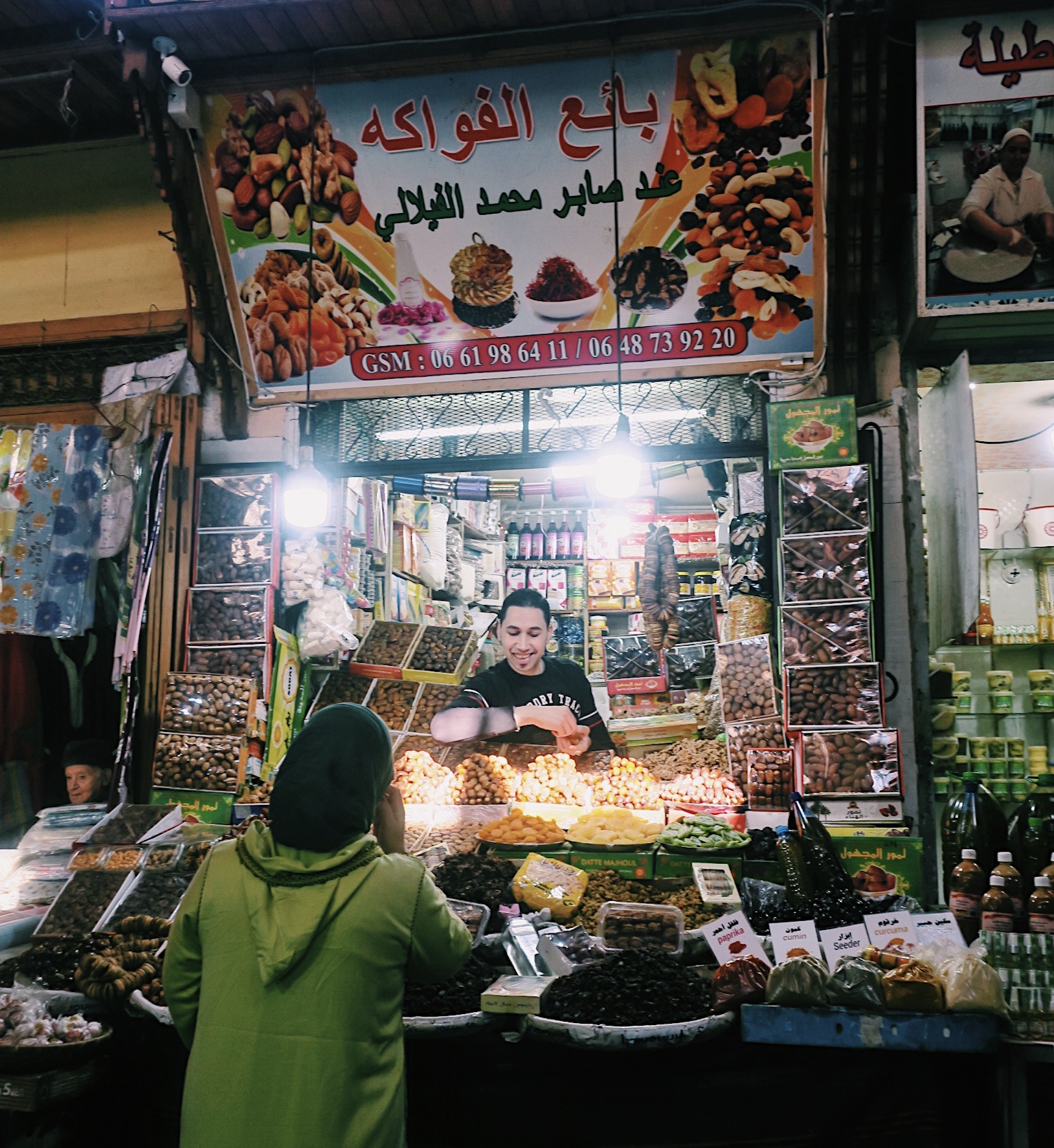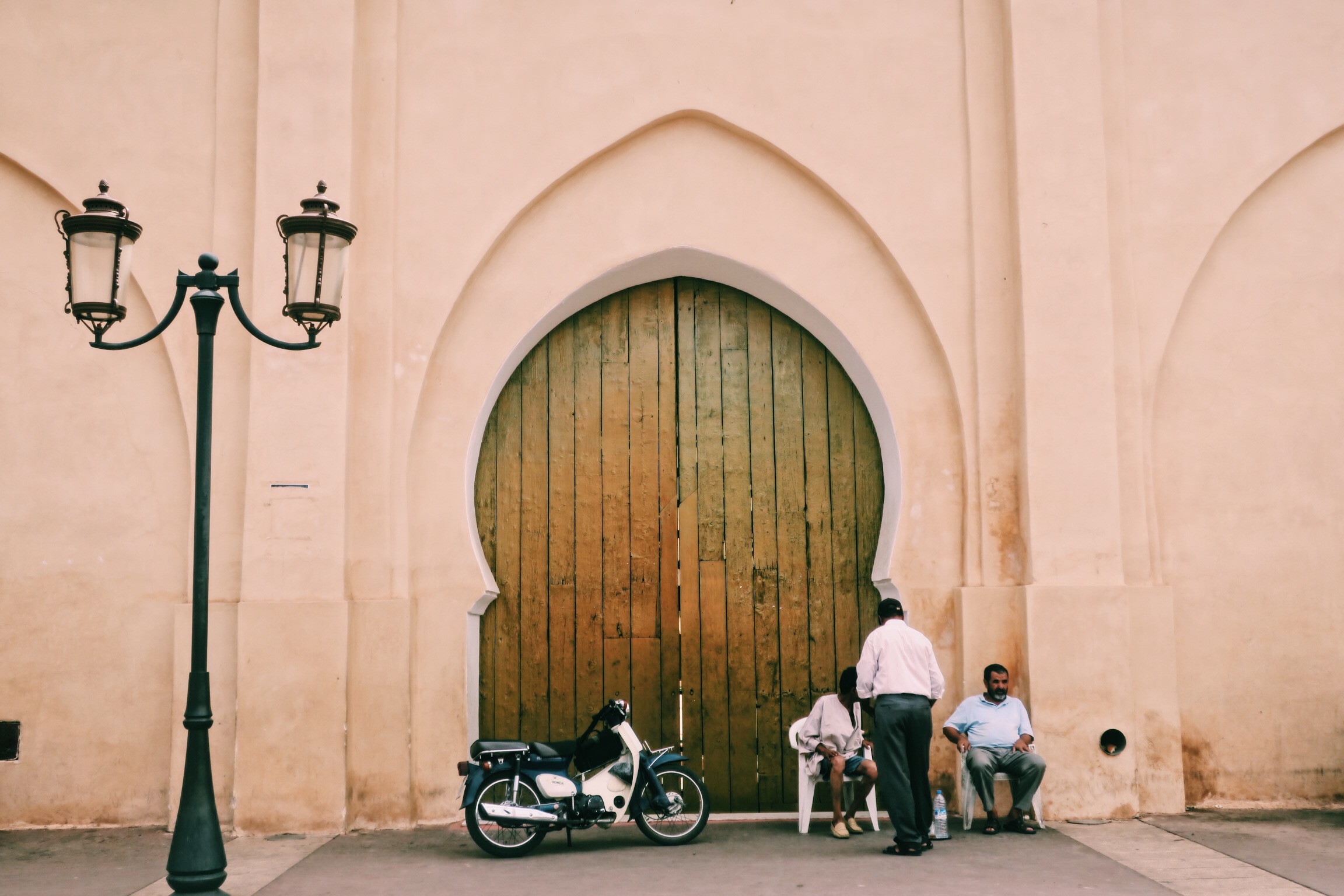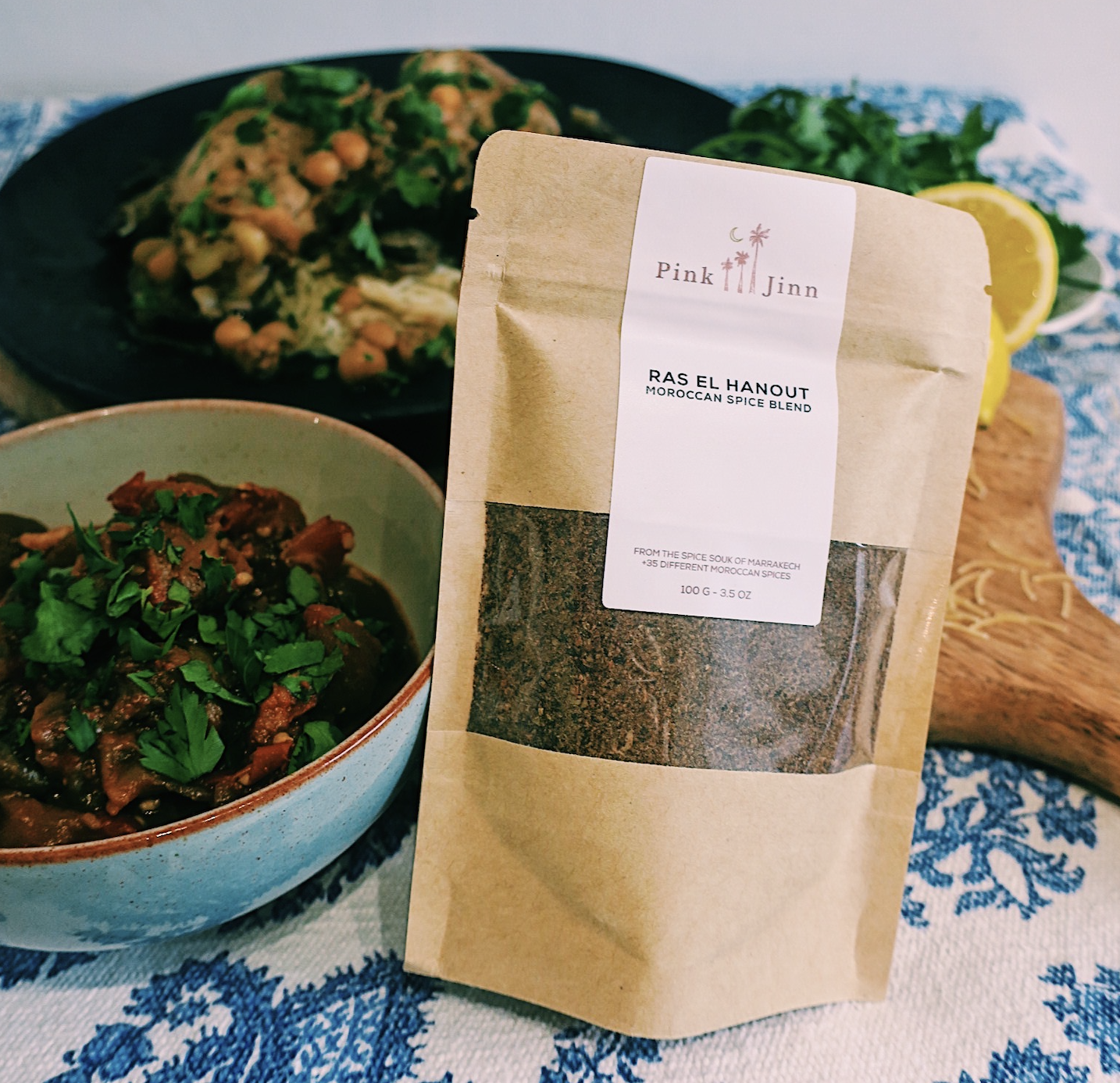Ras al Hanout at its core is an incredibly complex and aromatic blend of spices. Across the Middle East and North Africa, blends such as za’atar, dukkah, chermoula and zhug are widely used in cooking, helping to create distinctive flavour profiles that enhance ingredients from aubergines, okra, chickpeas, to fresh sea trout and lamb.
However, most sophisticated of all blends would certainly be this russet coloured and deeply fragrant blend. Ras al Hanout quite literally translates to “top shelf”, as it incorporates the very best and highest quality spices, meaning it would historically be positioned on the highest shelf of the spice merchant’s shop. Merchants from across the North African countries of Morocco, Tunisia and Algeria pride themselves on the uniqueness of their particular special blend. A mere teaspoon of this precious powder will dramatically transform dishes of tenderised lamb, ox cheek and winter squash.

While roaming the souqs of Fes, Marrakech, Tunis and Algiers visitors will encounter stalls with dome-shaped masses of golden and bronzed spices. These glistening pyramids are accompanied by jars of preserved lemons, tiny pots of saffron threads and cotton sacks stuffed with cinnamon sticks, dried rose petals and wild mint.

It’s easy to pass time admiring this colourful sight, in addition to observing the activities of the local patrons who visit the spice merchants. Local women, elegantly dressed in turquoise or emerald green jellabas frequent these stalls across North Africa, often enthusiastically haggling for their purchases, before moving on to the butcher or greengrocer for the remaining items on their shopping list.

The fragrance of these spices and herbs blend into a cacophony of smells that emanate from the bustling souqs; from the effluvious sulphur used to treat leather in the tanneries, argan oil perfumed with jasmine, black olive soap, bubbling coffee to roasting meat. Every time I open the door to my spice cupboard at home I’m overwhelmed as the sealed jars fail to contain their aromas.

The heady perfume of Ras al Hanout invades the senses, triumphing over neighbouring cumin, cardamom, ginger and cloves. This particular scent also invokes memories that transport me to the glorious chaos of the bustling souq and its narrow, colourful streets. The smell also reminds me of the quiet companionship of the Moroccan dinners that I was fortunate to attend while living with a local family. During the evening family members of all generations and myself kneeled closely around a steaming tagine pot, eagerly scooping up the delicious contents with freshly baked bread. Later we sipped hot, fresh mint tea sweetened with sugar and nibbled on chebakia (sesame biscuits with honey).


Pink Jinn’s Ras al Hanout blend is distinctive, its contents varying dependant on the spices that are available on the day of making. All batches include 35+ ingredients ranging from saffron, fennel seeds and Anise to thyme, cassia to sweet paprika. A third of the profits of every sale of this Ras al Hanout also go to Project Soar Morocco, an organisation which works to empower vulnerable and marginalised adolescent girls through educational programmes focused on helping girls understand their value, voice, body, rights and path. To shop, click here!

Later in this blog series we’ll explore recipes and dishes which incorporate Ras al Hanout, from classic tagines to hearty soups served during the holy month of Ramadan.

If you enjoyed this, you might also like:
5 classic Moroccan dishes to try at home
8 benefits of Moroccan Argan Oil
12 essential ingredients for cooking Middle Eastern food
Lydia Daniels is a graduate linguist specialising in Spanish and Arabic. Now based in London, Lydia works in digital marketing while blogging on the side at The Foody Girl. She delights in whipping up sensational dishes, spending lazy afternoons sketching, hiking in mountains and immersing herself in new cultures. Her adventures have taken her to many enchanting cities so far; Valencia, Madrid, Barcelona, Amman, Rabat. All the photos in this post are Lydia’s own.
To explore the Foody Girl’s entire collection of Moroccan and North African recipes click here.







